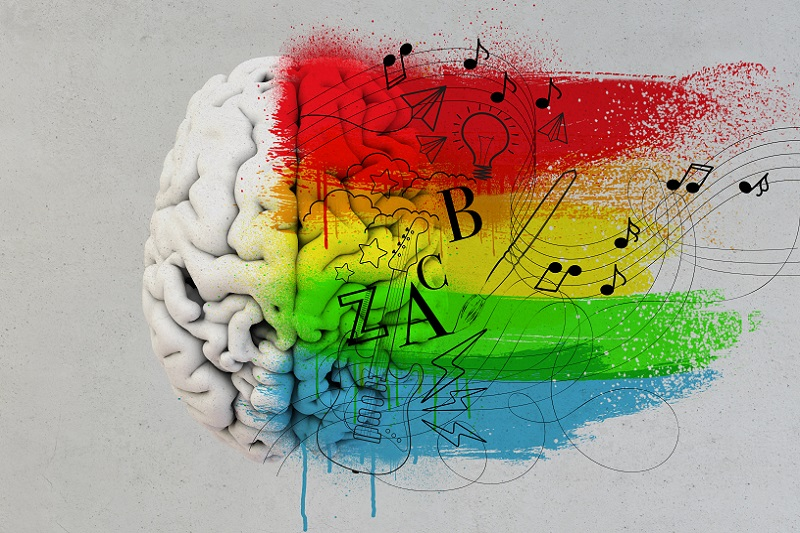ATD Blog
Strategic Use of Music to Support Learning
Mon Aug 29 2022

Quick. What’s the letter immediately after P in the English alphabet? You’re probably singing the alphabet song to yourself to answer this question. The song is an example of a mnemonic device—an effective tool for helping learners memorize nearly anything. There is something special about this particular device that makes it so unforgettable: music.
Listening to music affects a wide cross section of the brain, including those areas linked to spatial reasoning and navigation. Since these areas are also known to play a role in memory and recall, it’s not a big leap to conclude that music can support or even accelerate the learning process. But how, exactly, does it work? What are some guidelines for including music in your instructional design?
The Power of Music to Influence the Mind
Educators have understood the power of music since at least the time of ancient Greece. With increased insights coming from the field of neuroscience, there’s been a heightened interest in understanding how music affects our cognitive processes. Over the past two years, almost 100,000 peer-reviewed papers have been published with the keywords “music and learning.” There are many examples of the powerful effects of music on the brain:
Music helps us learn new languages and mathematics. Many recent studies confirm that students who take formal musical training perform better in math and language subjects. This is no surprise because math and music are processed as languages in the brain.
Music improves our ability to predict future outcomes. While you’re listening to music, the prefrontal cortex develops expectations about what’s coming next. Your learners are doing the same thing during your classes. Prediction is an essential survival skill that can be improved with practice, which is a great way to improve thinking skills.
Music enhances working memory. Trained musicians are found to have superior working memory compared to nonmusicians. Note that this effect applies to people who have achieved a level of competency as musicians and will not apply to novices.
Music coordinates movement and stores muscle memories. When learning a new physical skill or process, musical accompaniment can help make the learning stick, connecting different parts of the song to different steps in the process. At the same time, our actual physical performance of the skill may be enhanced.
Music makes learning more fun, which makes us want to learn more. Music increases dopamine levels in the brain’s reward center, stimulating a desire to learn more. This reward cycle can increase memory performance for nonmusical information that is associated with the music.
Music helps you create, organize, and retrieve memories. The hippocampus produces and retrieves memories, regulates emotional responses, and helps us navigate imagined and external space. Music increases the activation of the hippocampus and may lead to the production of new neurons.
Music helps you focus. When people listened to their preferred background music while performing a task that required sustained focus and attention, they performed better than the control group without a musical background.
Music prevents employee stress and burnout. People working in highly stressful environments are able to manage their stress and avoid burnout better when they work while listening to music.
Which Music Is Best for Learning?
While the Mozart effect has often been misinterpreted to mean that listening to Mozart increases IQ, his music has been shown to improve efficiency in certain mathematical tasks when it is played in the background. A recent study expanded this effect to include all background music without vocals. Playing any type of instrumental music in the background while learners are studying appears to improve memory and recall of the information, but music with lyrics may actually inhibit learning. It is likely that forcing the brain to decipher the lyrics may create too much cognitive load. But watch out! If you play music that someone strongly dislikes, you’ll have a negative impact on learning.
Key Takeaways
The use of instrumental background music can help learners perform better in class and on the job. It can also help them cope with workplace stress and avoid burnout.
Be sure that the music you choose appeals to your learning audience. Avoid lyrics unless you are using a song as a mnemonic device and have written a specific song to support the memory of your content (like in the alphabet song).
For a practical guide to implementing music in your training, access this wonderful member-only guide by Lenn Millbower.
One Word of Caution
Just because you can find music online doesn’t mean you have a legal right to use it. Most music is protected by copyright, but you may be able to obtain an inexpensive license from the American Society of Composers, Authors and Publishers (ASCAP). Visit their website to learn more.
The Bottom Line
If you’re not using background music in your training, you’re missing an important tool to improve learning outcomes.
